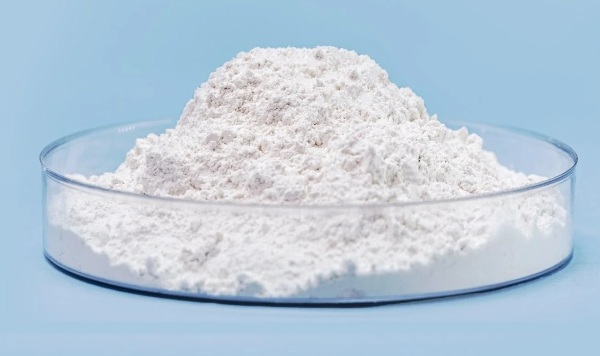
The microcrystalline cellulose market is expected to grow at a CAGR of 7.2% during the forecast period of 2025 to 2033. The drivers, including the rising demand for pharmaceuticals, growing adoption in the food and beverage industry, and expanding applications in cosmetic formulations, underscore the diverse forces propelling the market growth. The identified restraint related to environmental concerns in raw material sourcing emphasizes the need for industry players to adopt sustainable practices. Market segmentation reveals the significance of raw materials, with non-wood-based sources leading in both revenue and CAGR and the versatile forms of microcrystalline cellulose, with powder dominating in revenue and liquid expected to exhibit the highest CAGR. Geographic trends highlight Asia-Pacific as the leading region, driven by robust manufacturing activities. Competitive trends underscore the importance of research and development, strategic partnerships, and sustainability initiatives in maintaining a competitive edge. The actual conclusion drawn from the generated content is that the microcrystalline cellulose market is poised for sustained growth, driven by its crucial role in pharmaceuticals, versatile applications in the food and beverage industry, and expanding usage in cosmetic formulations. However, environmental concerns in raw material sourcing pose challenges that necessitate industry players to adopt sustainable practices. As the market evolves, companies investing in research and development, forming strategic partnerships, and prioritizing sustainability are expected to thrive in this dynamic landscape.
Rising Demand in Pharmaceutical Industry: Critical Role in Drug Formulations
The microcrystalline cellulose market experiences robust growth driven by the rising demand in the pharmaceutical industry. Evidence from pharmaceutical trends indicates that microcrystalline cellulose is a widely used excipient in drug formulations, contributing to the enhanced properties of tablets and capsules. The highest Compound Annual Growth Rate (CAGR) during the forecast period from 2025 to 2033 is anticipated in this segment, signifying the indispensable role of microcrystalline cellulose in pharmaceutical applications. As the global pharmaceutical industry continues to expand, the demand for microcrystalline cellulose as a key ingredient in drug manufacturing is expected to rise, driving market growth.

Growing Adoption in Food and Beverage Industry: Versatile Applications in Food Products
The microcrystalline cellulose market witnessed significant growth owing to its growing adoption in the food and beverage industry. Evidence from food and beverage trends highlights the versatile applications of microcrystalline cellulose as a stabilizer, thickener, and anti-caking agent in various food products. The highest CAGR during the forecast period from 2025 to 2033 is expected in this segment, reflecting the increasing use of microcrystalline cellulose to improve the texture and quality of food items. As consumers seek cleaner labels and manufacturers focus on product innovation, the demand for microcrystalline cellulose in the food and beverage industry is poised for substantial expansion.
Expanding Applications in Cosmetic Formulations: Enhancing Texture and Stability in Cosmetics
The microcrystalline cellulose market registers notable growth due to its expanding applications in cosmetic formulations. Evidence from cosmetic industry trends indicates that microcrystalline cellulose is utilized for its ability to enhance the texture and stability of various cosmetic products, including creams, lotions, and powders. The highest CAGR during the forecast period from 2025 to 2033 is anticipated in this segment, underscoring the increasing importance of microcrystalline cellulose in cosmetic manufacturing. As the cosmetic industry witnesses a surge in demand for high-quality and innovative products, the market for microcrystalline cellulose is expected to benefit from its multifunctional properties.
Environmental Concerns Regarding Sourcing: Sustainability Challenges in Raw Material Procurement
A significant restraint in the microcrystalline cellulose market is associated with environmental concerns regarding sourcing. Evidence includes instances where the industry faces challenges in ensuring sustainable and responsible procurement of raw materials, especially in the wood-based category. This restraint emphasizes the need for industry players to adopt environmentally friendly practices, explore alternative raw material sources, and collaborate with stakeholders to address sustainability challenges. As consumers and regulatory bodies increasingly focus on environmentally responsible sourcing, addressing these concerns will be pivotal for the long-term viability of the microcrystalline cellulose market.
Market Analysis by Raw Material: Non-Wood-Based Sources Dominate the Market
In 2024, the microcrystalline cellulose market demonstrated substantial revenue from non-wood-based sources, with non-wood-based leading in both revenue and CAGR. This reflects the industry's recognition of alternative raw materials and the demand for non-wood-based microcrystalline cellulose in various applications. The highest CAGR during the forecast period from 2025 to 2033 is expected in the wood-based category, indicating sustained demand for microcrystalline cellulose derived from wood sources. This segmentation provides insights into the diverse raw materials used in microcrystalline cellulose production and their respective market dynamics.
Market Analysis By Form: Powder Segment Dominates the Market
The microcrystalline cellulose market showcased significant revenue from the powder form in 2024, with powder leading in both revenue and CAGR. This reflects the widespread use of microcrystalline cellulose powder in pharmaceuticals, food products, and cosmetics. The highest CAGR during the forecast period from 2025 to 2033 is anticipated in the liquid form category, highlighting the industry's exploration of innovative formulations. This segmentation reveals the versatility of microcrystalline cellulose in different forms and its adaptability to diverse manufacturing processes.
APAC remains the Global Leader
Geographically, the microcrystalline cellulose market demonstrated dynamic trends in 2024, with Asia-Pacific leading in revenue generation and the highest CAGR. This reflects the region's prominence in pharmaceutical and food manufacturing, driving the demand for microcrystalline cellulose. North America and Europe also contributed substantially to revenue, showcasing a global trend towards the widespread adoption of microcrystalline cellulose in diverse industries. This geographic segmentation provides insights into the regional dynamics shaping the microcrystalline cellulose market.
Investment R&D to Decide on the Market Leader
The microcrystalline cellulose market's competitive landscape is characterized by key players adopting strategies to enhance their market position. Major companies, including FMC Corporation, Sigachi Industries Limited, Asahi Kasei Corporation, Rayonier Advanced Materials, DuPont, DFE Pharma GmbH, Accent Microcell, Avantor, Inc., Quadra Chemicals, JRS Pharma, and Huzhou City Linghu Xinwang Chemical Co., have implemented diverse strategies to capitalize on market opportunities. Leading players in the microcrystalline cellulose market prioritize investment in research and development as a key strategy. Evidence from industry trends highlights the continuous efforts of companies like FMC Corporation and Asahi Kasei Corporation to innovate and develop new formulations and applications for microcrystalline cellulose. This strategy aligns with the evolving needs of end-users and positions these companies as industry leaders driving innovation. As the market progresses from 2025 to 2033, investment in research and development is expected to remain a critical aspect of maintaining competitiveness and meeting the changing demands of various industries.
Historical & Forecast Period
This study report represents analysis of each segment from 2023 to 2033 considering 2024 as the base year. Compounded Annual Growth Rate (CAGR) for each of the respective segments estimated for the forecast period of 2025 to 2033.
The current report comprises of quantitative market estimations for each micro market for every geographical region and qualitative market analysis such as micro and macro environment analysis, market trends, competitive intelligence, segment analysis, porters five force model, top winning strategies, top investment markets, emerging trends and technological analysis, case studies, strategic conclusions and recommendations and other key market insights.
Research Methodology
The complete research study was conducted in three phases, namely: secondary research, primary research, and expert panel review. key data point that enables the estimation of Microcrystalline Cellulose market are as follows:
Market forecast was performed through proprietary software that analyzes various qualitative and quantitative factors. Growth rate and CAGR were estimated through intensive secondary and primary research. Data triangulation across various data points provides accuracy across various analyzed market segments in the report. Application of both top down and bottom-up approach for validation of market estimation assures logical, methodical and mathematical consistency of the quantitative data.
| ATTRIBUTE | DETAILS |
|---|---|
| Research Period | 2023-2033 |
| Base Year | 2024 |
| Forecast Period | 2025-2033 |
| Historical Year | 2023 |
| Unit | USD Million |
| Segmentation | |
Raw Material
| |
Form
| |
Grade
| |
Application
| |
End-Use
| |
|
Region Segment (2023-2033; US$ Million)
|
Key questions answered in this report